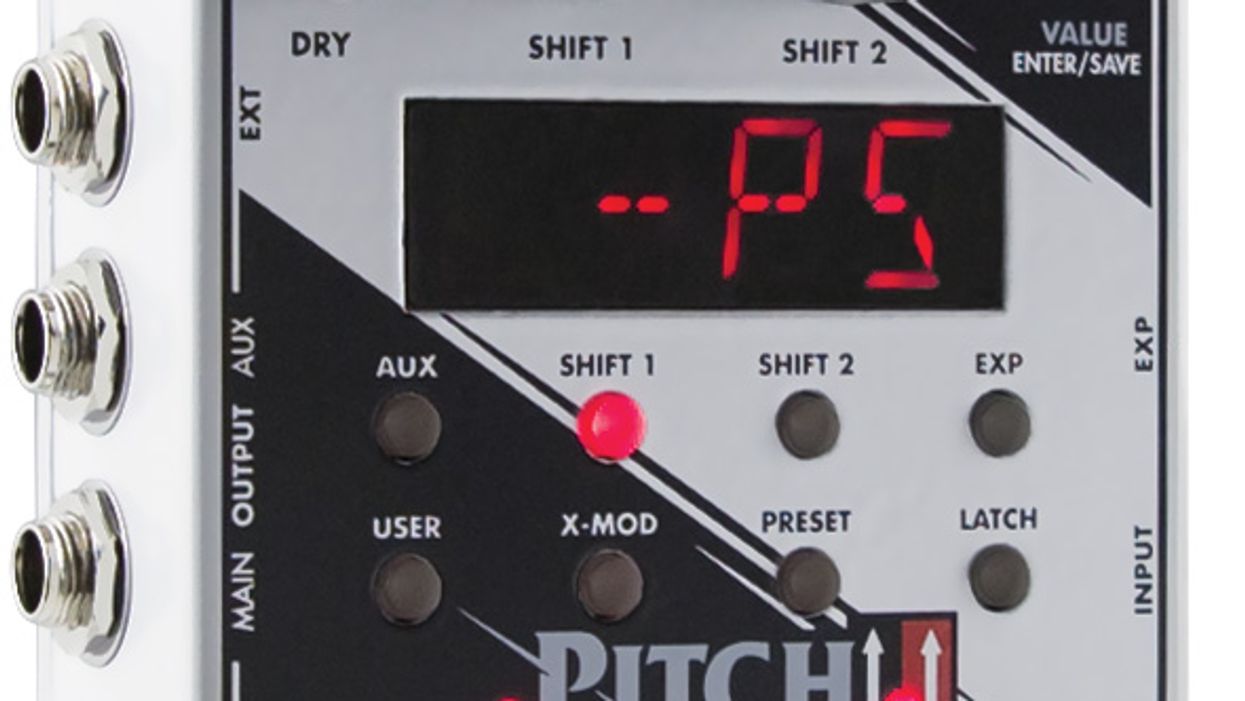Recorded with a Royer R-121 and a Shure SM57 going into an Audient iD44 then into GarageBand with no EQ-ing, compression, or effects.
Clip 1: Curtis Novak Jag-V neck pickup into J. Rockett Audio Archer feeding the Pitch Fork + then an Ibanez Analog Delay Mini then a Sound City SC30 combo. First Pitch Fork + setting uses the right footswitch to ramp up a perfect fifth. Next, the left-hand footswitch is engaged so that when the right footswitch’s momentary function is engaged it ramps up both a perfect fifth and a minor third.
RatingsPros:Yields a plethora of pitch-shifting options in a modest, flexible, and expandable footprint. Cons: Tends to hype and mask your guitar’s voice, even at conservative settings. Chord tracking could be better. Street: $214 Electro-Harmonix Pitch Fork + ehx.com | Tones: Ease of Use: Build/Design: Value: |
Where EHX’s original Pitch Fork was essentially a shrunken, treadle-less DigiTech Whammy competitor, the new Pitch Fork + is like the kid with aspirations to become a board-friendly Eventide H3000 harmonizer. It proffers two independent harmonies, each programmable across a +/- three-octave range by scalar interval (major or minor, not modal), with independent volumes for each voice and the dry signal. You can also program 100 presets (10 are factory loaded), as well as myriad expression-pedal, auxiliary-output, and footswitch-functionality configurations for each preset. Meanwhile, the bypass footswitch can behave as a momentary switch, and the left-hand “user” footswitch can be used to engage add-on effects such as modulation or ring-modulator, or to link multiple presets in a set-friendly preset “jump chain.”
Whether the Pitchfork + is right for you will likely boil down to its strong voice. Players looking to subtly augment a core tone—by creating a simple faux 12-string sound, for instance—may find it difficult to tame that voice, because even at low harmony and generous dry-signal volumes it adds a somewhat artificial-feeling sheen. That said, if loud ’n’ proud harmonized effects are your game, the Pitch Fork +’s intervallic smarts, almost head-spinning array of programming options, and ability to mesh with other pedals, including fuzz, may well make it a favored secret weapon. Particularly as its minimal control complement so deftly walks the line between powerful and simple.
Test Gear: Squier Classic Vibe ’70s Jaguar with Curtis Novak pickups, Sound City SC30.








![Rig Rundown: Russian Circles’ Mike Sullivan [2025]](https://www.premierguitar.com/media-library/youtube.jpg?id=62303631&width=1245&height=700&quality=70&coordinates=0%2C0%2C0%2C0)

















